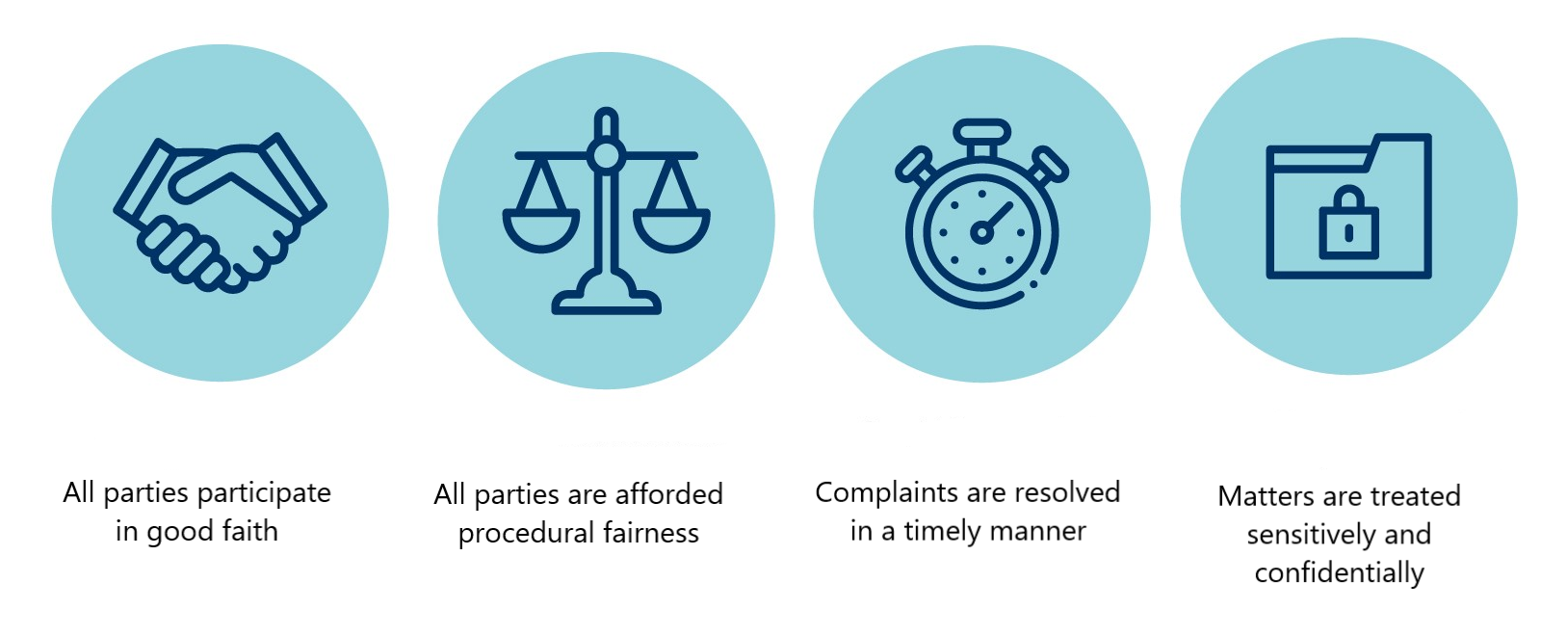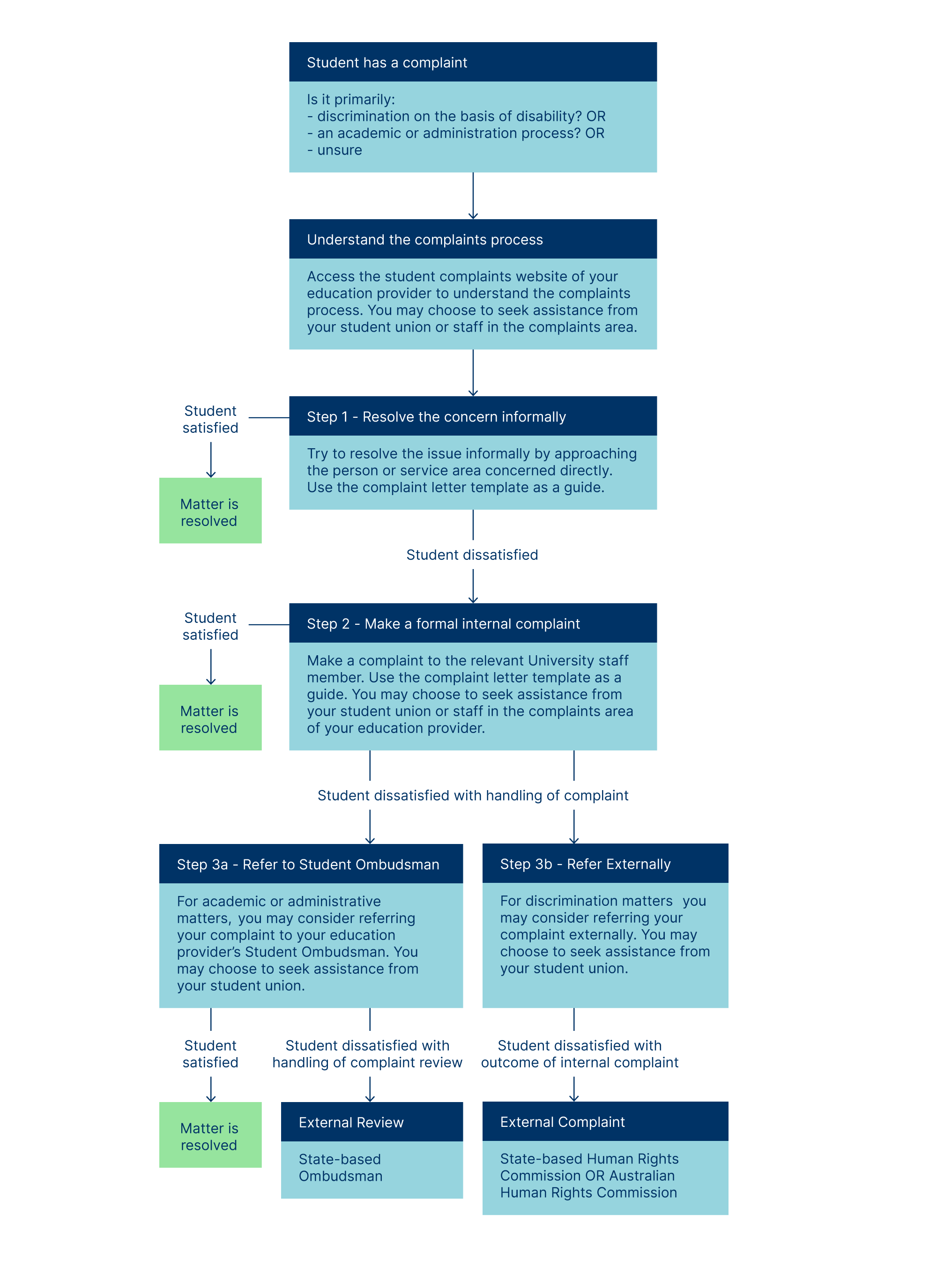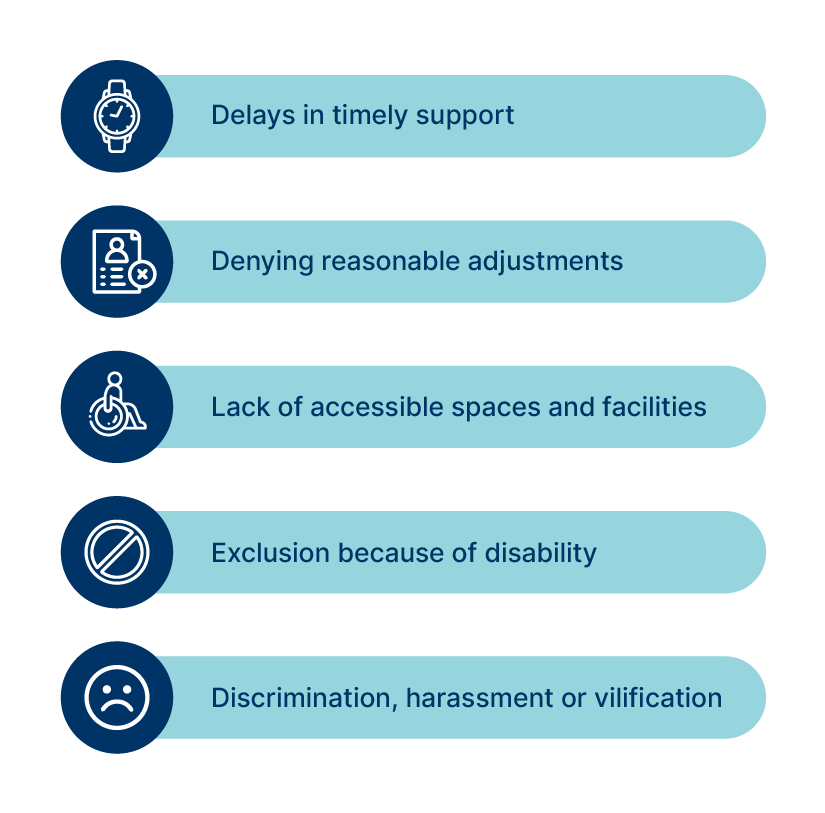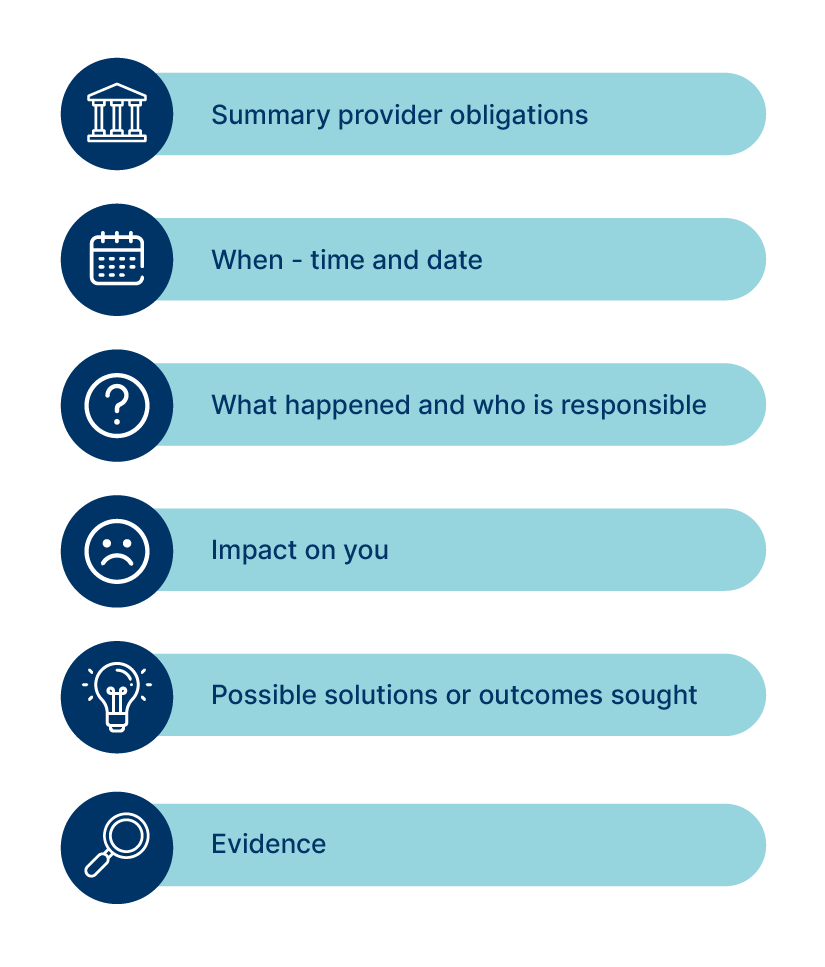Your rights and disability discrimination
This section has information on your rights and what to do if you have experienced disability discrimination in the course of your education or training. This includes when your
The information below includes what to do if your reasonable adjustments are not being met, and how to make a complaint.
Your rights
In Australia, education providers are required to provide appropriate supports and reasonable adjustments for students with disability. This is legislated via the Disability Discrimination Act (1992) and supported by a supplementary guide, the Disability Standards for Education (DSE) 2005. These two documents, working together, provide students with disability protection from discrimination based on disability that education providers must meet.
While education providers endeavour to support students with disability, sometimes things don’t always work out. Students are sometimes reluctant to raise concerns or make a complaint (either internally or externally).
When things go wrong between you and an education provider, it can be a challenge to right them again. Below is information to help any students experiencing difficulties with their education provider.
What if your reasonable adjustments aren't being met by your education provider?
ADCET knows through student inquiries that things can go wrong in relation to supporting students with disability, including reasonable adjustments. These situations are often urgent, distressing and students are not sure where to turn for help.
While ADCET continues to work for reform that makes things easier for students, our thinking needs to be grounded in the real experiences of students today and how students can navigate discrimination and inaccessibility using the currently available laws and remedies.
We know that for the most part education providers endeavour to adhere to the relevant legislation and try to incorporate innovative practice in learning and teaching. However, this article is about when you feel things are going wrong, answering some frequently asked questions to equip you with knowledge about your rights, and how to raise concerns effectively.
The information below operates on the assumption that you’ve declared your support needs and requested reasonable adjustments from an education provider and that you have:
- been denied reasonable adjustments
- received insufficient or inappropriate support to ensure that you can participate in your education on the same basis as other students
- experienced discrimination relating to your disability in relation to supports, education or enrolment processes.
What does discrimination look like?
Figure 1: What does discrimination look like
In educational settings less favourable or discriminatory treatment might include:
- excluding a person with disability from participating in some learning activities by not providing materials in accessible or alternative formats after a timely request e.g., captioned video material, accessible PDF format
- denying reasonable adjustments such as modified equipment to participate in a learning activity e.g., height adjustable desk or bench
- failing to make a reasonable adjustment to the way the course requirements are tested so they are accessible to a person with disability e.g., testing knowledge through an oral exam rather than a written test
- failing to provide accessible spaces and facilities to a person with a disability e.g., scheduling classes in accessible buildings or ensuring work-integrated learning locations are accessible
- excluding or expelling a person from learning activities or courses because of disability
- subjecting a person with disability to harassment such as insults, comments or actions which create a hostile or unsafe environment.
Principles of complaint management
Figure 2: Principles of complaint management

What are your options?
There are two main pathways for making a complaint about disability discrimination:
- an internal complaint through your education provider
- an external complaint through your state/territory or federal human rights commission.
Some key principles for complaint management include:
- all parties participate in good faith
- all parties are afforded procedural fairness
- complaints are resolved in a timely manner
- matters are treated sensitively and confidentially.
What does the process look like?
The flowchart below gives a brief outline of the formal and informal processes for internal complaints (this may differ slightly between providers), and at what point you might escalate your complaint externally.
Key steps are:
- Determine whether your complaint is disability discrimination or an academic or administrative process. Most tertiary providers have a range of policies and procedures covering informal and formal complaints based on discrimination or harassment, as well as administrative or academic complaints. You can seek advice from a complaint handler from your student union about the appropriate policy and procedure.
Your options are then to:
- Resolve the complaint informally
- If the matter is not resolved informally you can make a formal complaint through your education provider
- If you are dissatisfied with the outcome you can either take an administrative matter to your provider's Student Ombudsman. If it is it a discrimination matter you can make an external complaint to your state-based human rights commission OR to the Australian Human Rights Commission.
Detail on each of these steps is outlined under the section making a complaint.
Figure 3: Flowchart of student complaints of disability discrimination

Your complaint
Figure 4: What to include in your complaint
For all stages of the process or whether you are making an internal or external complaint it is useful to provide clear and succinct information about the issue you want to resolve. We have provided a Complaint template letter (below) to assist you with formulating your complaint.
The key information you should include:
- a summary of the provider’s obligations and links to the Disability Discrimination Act and the Disability Standards for Education 2005, should the reader not be aware of their obligations. You can also include relevant policies from your provider as appropriate
- a short and clear statement about when the events occurred, what happened and who is the respondent (i.e., who discriminated against you. This may be a person/s, a service area or the provider)
- a short and clear statement of the impact on you (e.g., how you felt, how it impacted your wellbeing and/or academic profession, financial impacts, etc)
- a short and clear statement about a reasonable resolution or outcome you would like to see. For example, provision of reasonable adjustments, review of reasonable adjustments, special consideration, review of grade, provision of service, or an apology. You may also have other suggestions about how the issue may be resolved (e.g., additional training for staff, policy recommendation etc). This is helpful, but not required
- evidence of your correspondence or communication and their response (where applicable or available). This might include emails, texts, or notes from conversations; medical documentation; a list of your reasonable adjustments; and other relevant information.
Your provider’s internal policy and procedures should tell you how to lodge a complaint. If in doubt talk to a discrimination advisor, disability advisor, counsellor or your student union for support and referral.
Complaint letter template
Making a complaint
Now that you have some of the fundamental information you can find out about making a complaint.



